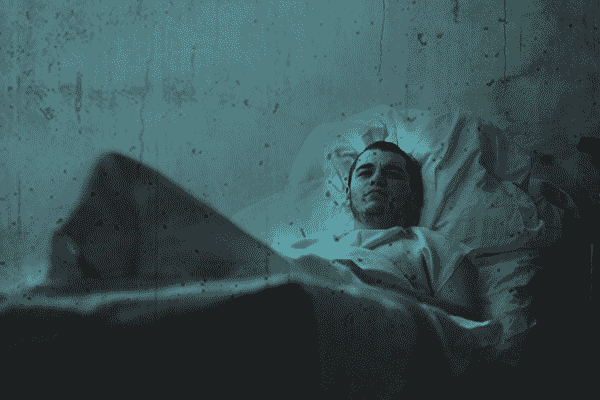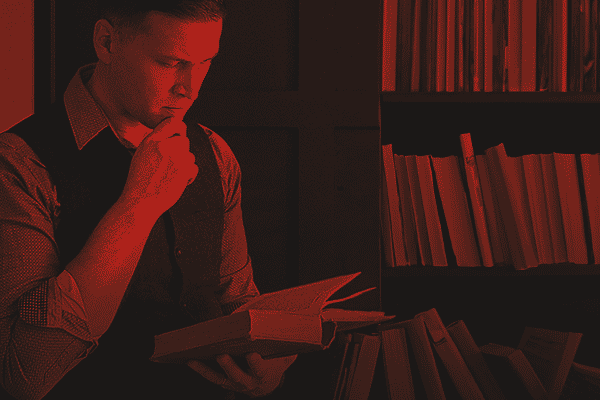| Boreal Herald Tribune | |
| February 1928 | Five Cents |
The Call of Cthulhu |
|
| By Howard Phillips Lovecraft | |
| Found Among the Papers of the Late Francis Wayland Thurston, of Boston | |
Of such great powers or beings there may be conceivably a survival... a survival of a hugely remote period when... consciousness was manifested, perhaps, in shapes and forms long since withdrawn before the tide of advancing humanity... forms of which poetry and legend alone have caught a flying memory and called them gods, monsters, mythical beings of all sorts and kinds...
The Horror in Clay — Part 3
This verbal jumble was the key to the recollection which excited and disturbed Professor Angell. He questioned the sculptor with scientific minuteness; and studied with almost frantic intensity the bas-relief on which the youth had found himself working, chilled and clad only in his night-clothes, when waking had stolen bewilderingly over him. My uncle blamed his old age, Wilcox afterward said, for his slowness in recognising both hieroglyphics and pictorial design.
Many of his questions seemed highly out-of-place to his visitor, especially those which tried to connect the latter with strange cults or societies; and Wilcox could not understand the repeated promises of silence which he was offered in exchange for an admission of membership in some widespread mystical or paganly religious body.
When Professor Angell became convinced that the sculptor was indeed ignorant of any cult or system of cryptic lore, he besieged his visitor with demands for future reports of dreams. This bore regular fruit, for after the first interview the manuscript records daily calls of the young man, during which he related startling fragments of nocturnal imagery whose burden was always some terrible Cyclopean vista of dark and dripping stone, with a subterrene voice or intelligence shouting monotonously in enigmatical sense-impacts uninscribable save as gibberish. The two sounds most frequently repeated are those rendered by the letters "Cthulhu" and "R'lyeh".
On March 23rd, the manuscript continued, Wilcox failed to appear; and inquiries at his quarters revealed that he had been stricken with an obscure sort of fever and taken to the home of his family in Waterman Street. He had cried out in the night, arousing several other artists in the building, and had manifested since then only alternations of unconsciousness and delirium. My uncle at once telephoned the family, and from that time forward kept close watch of the case; calling often at the Thayer Street office of Dr. Tobey, whom he learned to be in charge.

The youth's febrile mind, apparently, was dwelling on strange things; and the doctor shuddered now and then as he spoke of them. They included not only a repetition of what he had formerly dreamed, but touched wildly on a gigantic thing "miles high" which walked or lumbered about. He at no time fully described this object, but occasional frantic words, as repeated by Dr. Tobey, convinced the professor that it must be identical with the nameless monstrosity he had sought to depict in his dream-sculpture.
Reference to this object, the doctor added, was invariably a prelude to the young man's subsidence into lethargy. His temperature, oddly enough, was not greatly above normal; but his whole condition was otherwise such as to suggest true fever rather than mental disorder.
On April 2nd at about 3 p.m. every trace of Wilcox's malady suddenly ceased. He sat upright in bed, astonished to find himself at home and completely ignorant of what had happened in dream or reality since the night of March 22nd. Pronounced well by his physician, he returned to his quarters in three days; but to Professor Angell he was of no further assistance. All traces of strange dreaming had vanished with his recovery, and my uncle kept no record of his night-thoughts after a week of pointless and irrelevant accounts of thoroughly usual visions.
Here the first part of the manuscript ended, but references to certain of the scattered notes gave me much material for thought—so much, in fact, that only the ingrained scepticism then forming my philosophy can account for my continued distrust of the artist. The notes in question were those descriptive of the dreams of various persons covering the same period as that in which young Wilcox had had his strange visitations.
My uncle, it seems, had quickly instituted a prodigiously far-flung body of inquiries amongst nearly all the friends whom he could question without impertinence, asking for nightly reports of their dreams, and the dates of any notable visions for some time past. The reception of his request seems to have been varied; but he must, at the very least, have received more responses than any ordinary man could have handled without a secretary.
This original correspondence was not preserved, but his notes formed a thorough and really significant digest. Average people in society and business—New England's traditional "salt of the earth"—gave an almost completely negative result, though scattered cases of uneasy but formless nocturnal impressions appear here and there, always between March 23rd and April 2nd—the period of young Wilcox's delirium. Scientific men were little more affected, though four cases of vague description suggest fugitive glimpses of strange landscapes, and in one case there is mentioned a dread of something abnormal.
It was from the artists and poets that the pertinent answers came, and I know that panic would have broken loose had they been able to compare notes. As it was, lacking their original letters, I half suspected the compiler of having asked leading questions, or of having edited the correspondence in corroboration of what he had latently resolved to see.
That is why I continued to feel that Wilcox, somehow cognisant of the old data which my uncle had possessed, had been imposing on the veteran scientist. These responses from aesthetes told a disturbing tale. From February 28th to April 2nd a large proportion of them had dreamed very bizarre things, the intensity of the dreams being immeasurably the stronger during the period of the sculptor's delirium.

Over a fourth of those who reported anything, reported scenes and half-sounds not unlike those which Wilcox had described; and some of the dreamers confessed acute fear of the gigantic nameless thing visible toward the last. One case, which the note describes with emphasis, was very sad. The subject, a widely known architect with leanings toward theosophy and occultism, went violently insane on the date of young Wilcox's seizure, and expired several months later after incessant screamings to be saved from some escaped denizen of hell.
Had my uncle referred to these cases by name instead of merely by number, I should have attempted some corroboration and personal investigation; but as it was, I succeeded in tracing down only a few. All of these, however, bore out the notes in full. I have often wondered if all the objects of the professor's questioning felt as puzzled as did this fraction. It is well that no explanation shall ever reach them.
The press cuttings, as I have intimated, touched on cases of panic, mania, and eccentricity during the given period. Professor Angell must have employed a cutting bureau, for the number of extracts was tremendous and the sources scattered throughout the globe. Here was a nocturnal suicide in London, where a lone sleeper had leaped from a window after a shocking cry. Here likewise a rambling letter to the editor of a paper in South America, where a fanatic deduces a dire future from visions he has seen.
A despatch from California describes a theosophist colony as donning white robes en masse for some "glorious fulfilment" which never arrives, whilst items from India speak guardedly of serious native unrest toward the end of March. Voodoo orgies multiply in Hayti, and African outposts report ominous mutterings. American officers in the Philippines find certain tribes bothersome about this time, and New York policemen are mobbed by hysterical Levantines on the night of March 22-23.
The west of Ireland, too, is full of wild rumour and legendry, and a fantastic painter named Ardois-Bonnot hangs a blasphemous "Dream Landscape" in the Paris spring salon of 1926. And so numerous are the recorded troubles in insane asylums, that only a miracle can have stopped the medical fraternity from noting strange parallelisms and drawing mystified conclusions. A weird bunch of cuttings, all told; and I can at this date scarcely envisage the callous rationalism with which I set them aside. But I was then convinced that young Wilcox had known of the older matters mentioned by the professor.